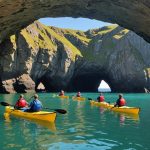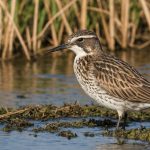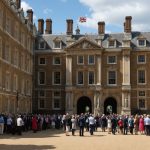Ultimate Guide to Birdwatching in the Norfolk Broads: Top Tips and Best Practices to the Norfolk Broads
The Norfolk Broads, located in the heart of East Anglia, is a paradise for birdwatchers and nature enthusiasts. This vast network of rivers, lakes, and wetlands is home to a diverse array of bird species, making it an ideal destination for those eager to spot some of the UK’s most fascinating birds. Whether you’re a seasoned birder or just starting out, the Norfolk Broads offer an unparalleled birdwatching experience.
Choosing the Right Time to Visit
When planning your birdwatching trip to the Norfolk Broads, timing is crucial. The area is a year-round haven for birds, but different seasons bring different species and behaviors.
Also to discover : Capturing Autumn”s Splendor: Top Tips for Photographing Cotswold Foliage
Spring and Summer
During the spring and summer months, the Norfolk Broads come alive with the songs of breeding birds. This is the perfect time to see species like the Reed Warbler, Sedge Warbler, and the majestic Marsh Harrier. The warm weather also brings an influx of migratory birds, such as the Swallow and the House Martin, which can be seen swooping over the broads and marshes.
Autumn and Winter
Autumn and winter are excellent times to spot migratory birds that stop over in the area or spend the winter months here. The Norfolk Broads are a key stopover point for many waders and waterfowl, including the Avocet, Lapwing, and various species of geese and ducks. The colder months also offer a chance to see rarer visitors like the Bittern and the White-fronted Goose.
Topic to read : Discover Devon”s Top Dog-Friendly Beaches: Your Ultimate Guide to Pawsome Adventures!
Best Locations for Birdwatching
The Norfolk Broads are dotted with numerous nature reserves and birdwatching hotspots, each offering unique viewing opportunities.
Minsmere Nature Reserve
Located on the Suffolk coast, just south of the Norfolk Broads, Minsmere is a must-visit for any birder. This reserve is renowned for its diverse habitats, including wetlands, heathland, and coastal areas. It’s a great place to spot the rare Bittern, as well as other species like the Bearded Tit and the Marsh Harrier.
Hickling Broad
Hickling Broad is one of the largest broads in the Norfolk Broads network and is a haven for birdlife. Here, you can see species such as the Common Crane, which has been reintroduced to the area, and the White-throated Diver. The broad’s extensive reedbeds and open water make it an ideal spot for spotting a wide range of birds.
Troup Head and the North Norfolk Coast
The North Norfolk Coast, particularly around Troup Head, is known for its seabird colonies. This area is a great place to see species like the Guillemot, Gannet, and Puffin. The coastal path offers stunning views of the sea and the surrounding cliffs, making it a perfect spot for a day’s birdwatching.
Essential Gear and Tips
To make the most of your birdwatching trip to the Norfolk Broads, it’s important to be well-prepared.
Binoculars and Spotting Scopes
Good-quality binoculars (7x or 8x magnification) and a spotting scope are essential for getting a close look at birds without disturbing them. When choosing binoculars, consider factors like weight, image quality, and durability.
Field Guides and Apps
A comprehensive field guide or a birding app can help you identify the birds you see. Apps like the RSPB Bird Identifier or the iBird Pro offer detailed descriptions, images, and audio recordings to aid in identification.
Clothing and Footwear
Dress in layers and wear comfortable, waterproof clothing. Good-quality waterproof boots or wellies are a must, as you’ll often be walking through wet and muddy areas.
Attracting Birds to Your Garden
If you’re staying in the area and have a garden, you can attract some of the local bird species by setting up birdhouses and feeding stations.
Birdhouses
Different bird species have specific preferences when it comes to birdhouses. For example, Eastern Bluebirds prefer houses in open fields, while Black-capped Chickadees and nuthatches like open woods and edges. Woodpeckers, on the other hand, prefer forest openings[2].
Here is a detailed list of birdhouse specifications for various species:
- Eastern Bluebird:
- Entrance hole: 1.5 inches
- Depth: 6-8 inches
- Mounting: Open fields, 3-5 feet off the ground
- Black-capped Chickadee:
- Entrance hole: 2.5 inches
- Depth: 6-8 inches
- Mounting: Open woods and edges, 5-10 feet off the ground
- Woodpecker:
- Entrance hole: 2.5-3 inches
- Depth: 12-18 inches
- Mounting: Forest openings, 10-15 feet off the ground
Predator Guards and Baffles
To protect the birds from predators, consider using predator guards or baffles. These can be metal reinforcement plates or pieces that fit around the entrance hole of the birdhouse. Baffles can also be placed on poles to prevent predators from climbing up[2].
Community and Guided Tours
Joining local birdwatching groups or participating in guided tours can enhance your birdwatching experience significantly.
Local Birding Groups
Groups like the Norfolk and Norwich Naturalists’ Society offer regular bird walks and trips to various nature reserves in the area. These events are a great way to meet fellow birders, learn from experienced guides, and gain insights into the local birdlife.
Guided Tours
Companies like Swallow Birding offer guided tours tailored to different regions and species. These tours are led by knowledgeable guides who can help you spot rare and elusive birds. Here’s what one participant had to say about their experience:
“Once again an amazing weekend’s birding. Giving the group the best chance of seeing as many birds as possible is always uppermost in Steve’s mind, come what may. The Lincolnshire reserves are fabulous (all with good cafes too) and Rutland Water was a joy to discover.” – Margaret Hutt[3]
Conservation Efforts and Responsible Birdwatching
Birdwatching is not just about spotting birds; it’s also about contributing to their conservation.
Respect the Habitat
Always respect the natural habitat of the birds. Avoid disturbing nests, and keep a safe distance to prevent stressing the birds.
Support Local Conservation
Support local conservation efforts by joining organizations like the RSPB or donating to local nature reserves. These organizations work tirelessly to protect and restore habitats, ensuring the long-term survival of bird species.
The Norfolk Broads offer a unique and enriching birdwatching experience, with its diverse range of habitats and species. By choosing the right time to visit, selecting the best locations, and being well-prepared with the right gear and knowledge, you can make the most of your trip. Whether you’re a seasoned birder or just starting out, the Norfolk Broads are a destination that will leave you with lasting memories and a deeper appreciation for the natural beauty of East Anglia.
Table: Key Bird Species and Their Preferred Habitats in the Norfolk Broads
| Species | Preferred Habitat | Best Time to See |
|---|---|---|
| Marsh Harrier | Wetlands, reedbeds | Spring and Summer |
| Bittern | Wetlands, reedbeds | Autumn and Winter |
| Common Crane | Wetlands, broads | Spring and Summer |
| White-throated Diver | Open water, broads | Spring and Summer |
| Guillemot | Coastal cliffs, seabird colonies | Spring and Summer |
| Puffin | Coastal cliffs, seabird colonies | Spring and Summer |
| Reed Warbler | Wetlands, reedbeds | Spring and Summer |
| Sedge Warbler | Wetlands, reedbeds | Spring and Summer |
| Avocet | Wetlands, salt marshes | Autumn and Winter |
| Lapwing | Wetlands, fields | Autumn and Winter |
| White-fronted Goose | Wetlands, fields | Autumn and Winter |
Detailed List: Tips for Setting Up Birdhouses
-
Choose the Right Birdhouse:
-
Select a birdhouse that is appropriate for the species you want to attract. Different species have different preferences for entrance hole size, depth, and mounting height[2].
-
Mounting Location:
-
Place the birdhouse in a location that matches the preferred habitat of the target species. For example, bluebirds prefer open fields, while woodpeckers like forest openings[2].
-
Facing the Entrance Hole:
-
Mount the birdhouse with the entrance hole facing slightly downward to keep wind and rain out. Ensure the house is securely mounted to prevent it from swinging or moving[2].
-
Avoid Perches:
-
Do not include a perch on the birdhouse as it can give predators easier access to the inside[2].
-
Predator Guards and Baffles:
-
Use predator guards or baffles to protect the birds from predators like squirrels, raccoons, and snakes[2].
-
Maintenance:
-
Regularly clean and maintain the birdhouse to ensure it remains a safe and healthy environment for the birds. Remove old nests and clean out debris at the end of each breeding season[2].
By following these tips and best practices, you can create a welcoming environment for birds in your garden and contribute to their conservation in the Norfolk Broads.








